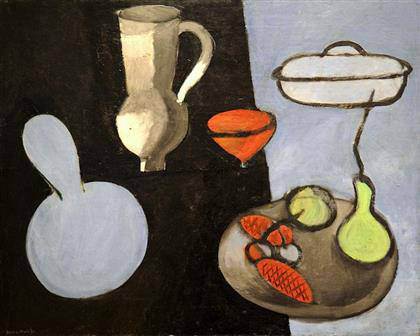
Henri Matisse: “Gourds, Issy-les-Moulineaux”, 1915-16. Oil on canvas, 65.1 x 80.9 cm. The Museum of Modern Art, New York. Mrs. Simon Guggenheim Fund, 109.1935. Photo © Archives H. Matisse. © Succession H. Matisse/DACS 2017
‘Matisse in the Studio’ at the Royal Academy of Arts The Royal Academy of Arts presents ‘Matisse in the Studio’, the first exhibition to consider how the personal collection of treasured objects of Henri Matisse (1869-1954) were both subject matter and inspiration for his work. Royal Academy of Arts, London, 5 August — 12 November 2017]]>
Source: Museum of Fine Arts Boston / Royal Academy of Arts
Matisse’s eclectic collection ranged from a Roman torso, African masks and Chinese porcelain to intricate North African textiles from the nineteenth and twentieth centuries. He selected these objects primarily for their aesthetic appeal and although not generally rare or the finest examples of the traditions to which they belonged, they were of profound significance to Matisse’s creative process. Most of the objects are on loan from the Musée Matisse, Nice, and several others are from private collections, which will be publicly exhibited outside France for the first time.
The exhibition explores how Matisse continuously returned to his collection throughout his working life and how the objects were reconsidered, depending on the pictorial environment into which they were placed. In 1951 he said, “I have worked all my life before the same objects…. The object is an actor. A good actor can have a part in ten different plays; an object can play a role in ten different pictures.” Matisse’s objects were vital creative stimulus, so much so that he travelled with them, even to temporary residences, and letters to family members often included requests for objects to be moved from Paris to Nice.
This sumptuous exhibition offers a rare glimpse into the artist’s personal collection, as well as the paintings, sculptures and drawings it inspired. Seen together, they reveal how Matisse’s masterful vision of richness, balance and vital, fluid energy first stemmed from the collage of patterns and rhythms which he found in the world of objects.
Related content
”Matisse: In Search of True Painting” at the Metmuseum (exhibition, 2012-13)
Follow us on:


